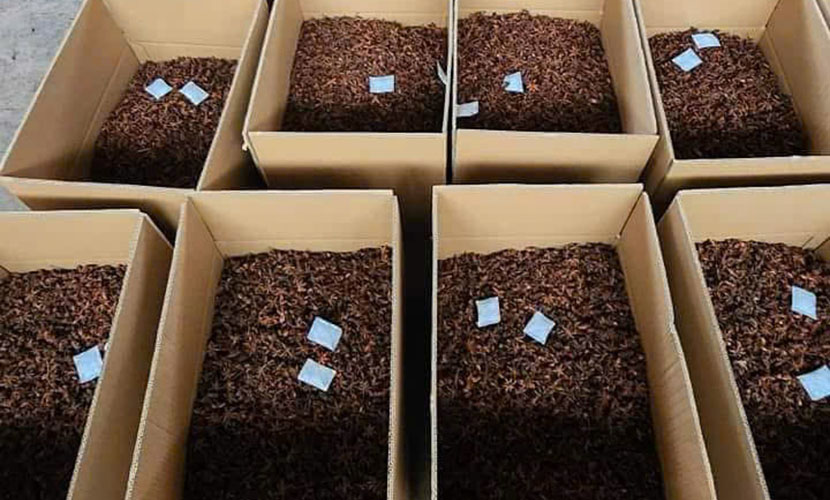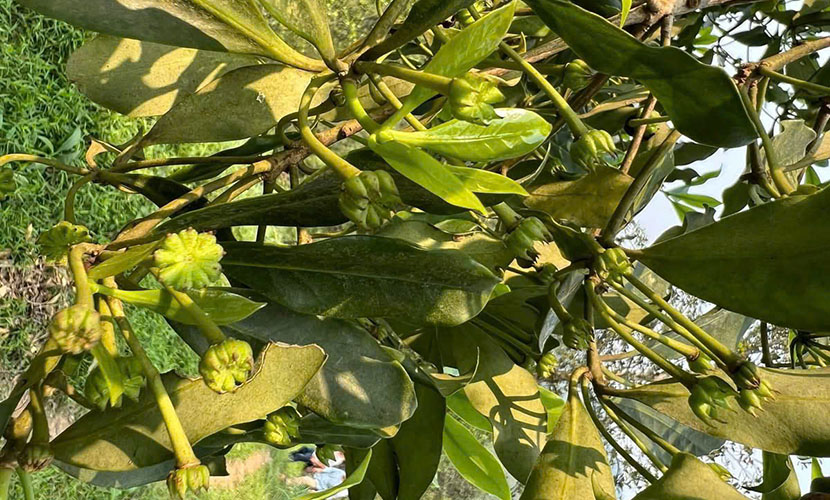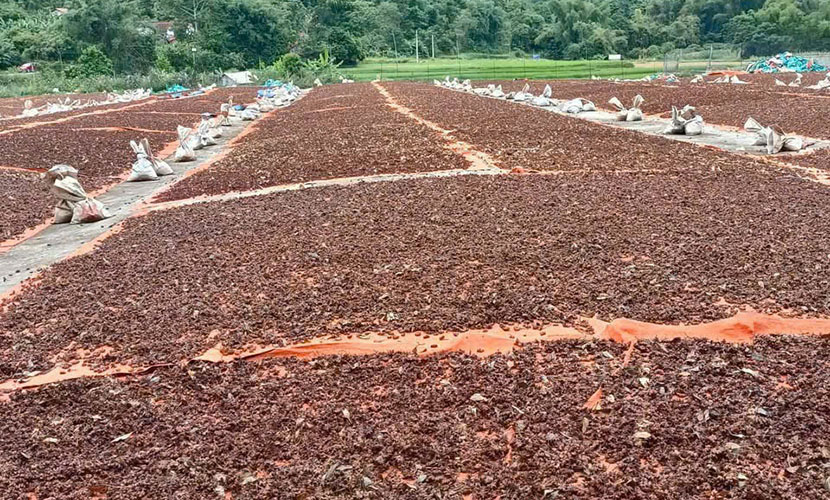
Van Quan is the district with the largest star anise cultivation area in Lạng Sơn province. It covers approximately 14,000 hectares, of which more than 300 hectares are Vietnamese organic star anise. The total annual quantity of fresh star anise reaches around 30,000 tons.
To enhance the quality, Van Quan has encouraged farmers to focus on organic production methods. Up to now, the project has yielded promising results. Accordingly, there are more than 300 hectares of organic star anise across the district.

Vietnamese organic star anise
Mr. Cuong, Chairman of Lien Hoi commune, said: “The total star anise cultivation area in our commune is about 500 hectares. In which, there are 85 hectares of Vietnamese organic star anise. The average yield is around five tons per hectare. Currently, the local authorities are encouraging residents to shift toward organic production to enhance both yield and product quality.”
Additionally, the commune is developing a 3.6-hectare model of organic star anise forest in Khon Cai village. This model involves scientific care techniques, such as using decomposed manure. If it proves effective, it could serve as a foundation for wider application.
Mr. Hoi, a pioneering farmer in Khon Cai village, shared: “My family inherited star anise forests from our ancestors. In the past, we cared for and harvested the trees very naturally, so the yield was low and inconsistent. When the local government introduced a program to promote Vietnam’s organic star anise forests with support policies, I and several villagers boldly applied it to our own land.”

Fresh organic star anise
According to Mr. Hoi, Vietnamese organic star anise development is most feasible when using existing natural forest areas. Farmers clear and weed the forest thoroughly. Old, unproductive trees are cut down and replaced with new ones. In addition, planting distances are optimized to ensure sufficient space and light for healthy growth.
Importantly, farmers now use organic fertilizers and keep records of the cultivation and care process. Trees grown organically have lush green leaves, reduced leaf shedding, and flower-bearing rates that are 15–20% higher.
Ms. Hoan, also from Khon Cai village, shared that the biggest challenge in developing star anise in the locality is the seed source. Currently, the quality of newly planted trees is inconsistent. Most seeds are selected by locals based on the size of the fruit or how prolific the tree appears, but since it takes about 10 years to see results, the risk is very high.
Another difficulty star anise growers face is market access. Sales still heavily depend on the Chinese market. In light of this, establishing cooperatives and farmer groups to create reputable, competitive growing regions for Vietnamese star anise is a vital strategy for adding value to the crop.

Drying organic star anise
According to Ms. Hanh from Diem He town, the star anise processing technology in Vietnam remains rudimentary, with only a handful of essential oil extraction facilities. Domestic demand is minimal, so the primary market remains export. Meanwhile, locally extracted oils cannot compete with imported ones in terms of both quality and price. As a result, the main sales channels for farmers are still direct sales of fresh or dried star anise.
Mr. Thinh, Deputy Director of Lang Son province, stated: “Organic star anise cultivation is a necessary direction. Therefore, the province will align star anise growing with the goal of creating sustainable livelihoods for local people. However, the challenge lies in the long time required to assess the effectiveness of such models, which demands substantial funding.”
He also emphasized that sustainable development requires building strong production linkages between businesses and farmers. However, the small-scale farming habits of local growers, along with restrictive policies for businesses wanting to invest directly in forestland cultivation and production, remain major barriers to expanding commercial star anise production.
Vietnamese source: https://nongnghiepmoitruong.vn/go-kho-cho-hoi-huu-co-d285632.html
